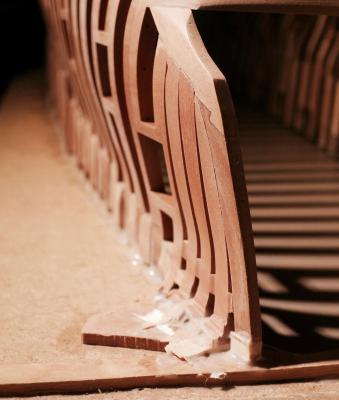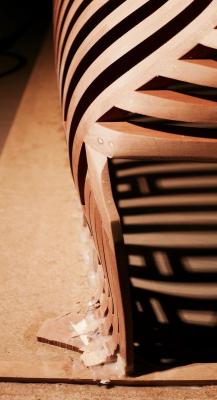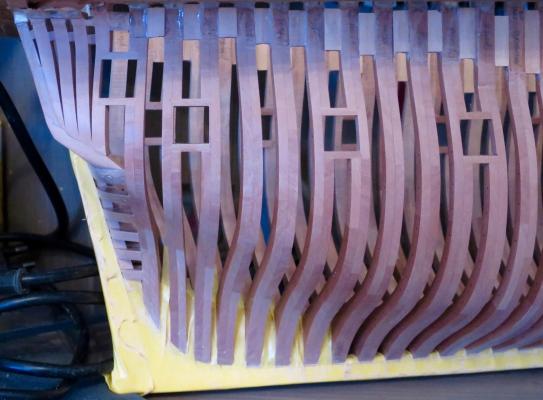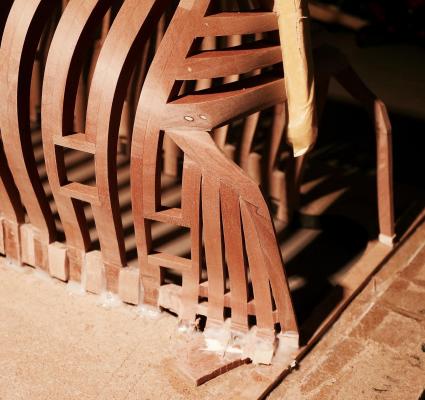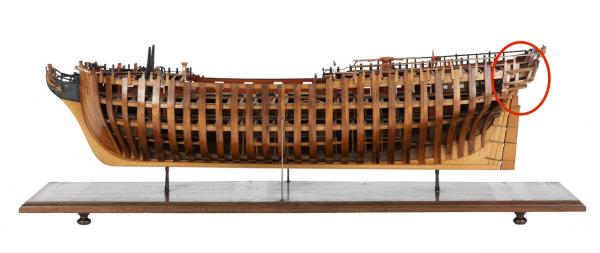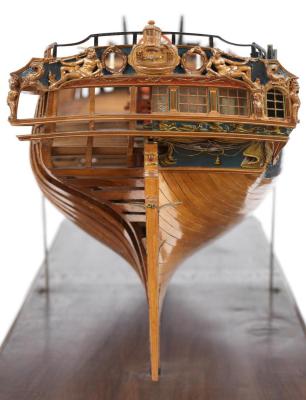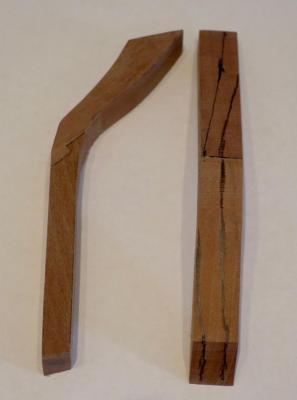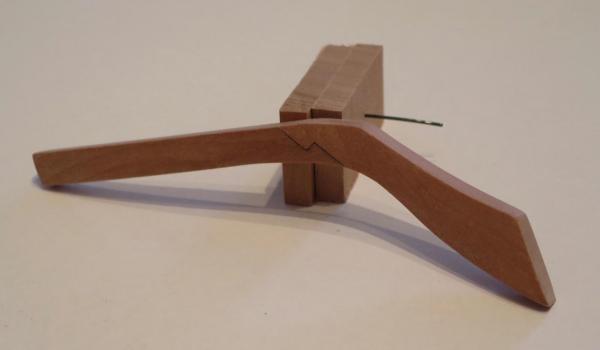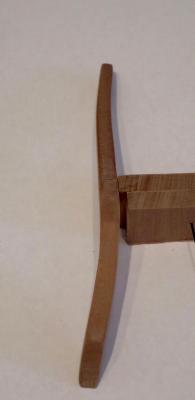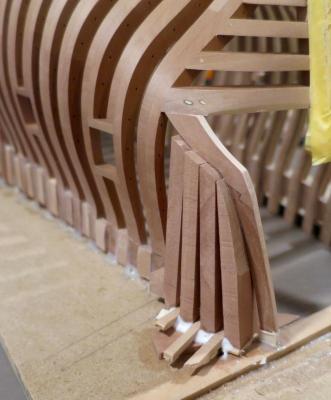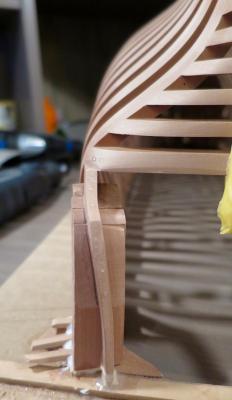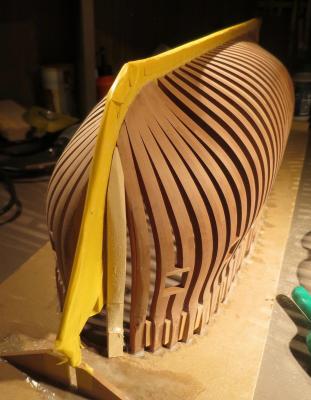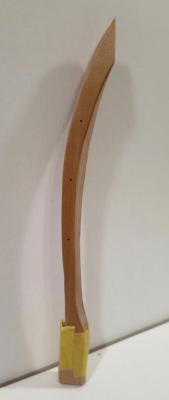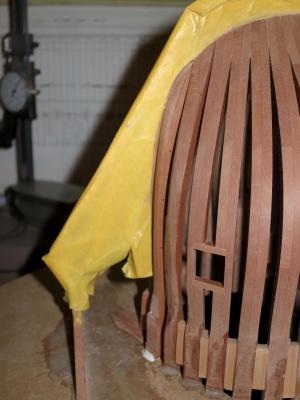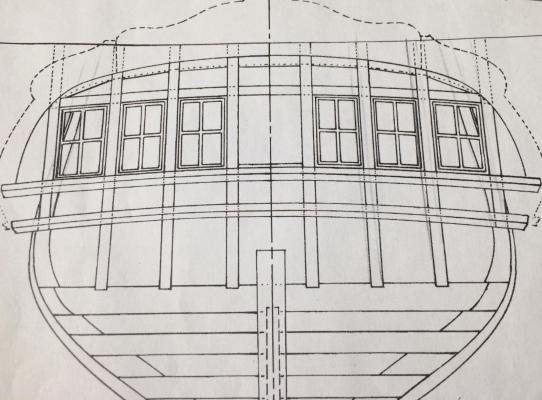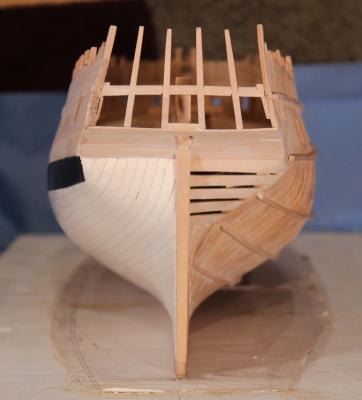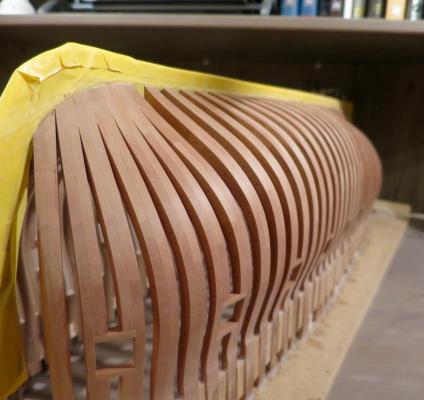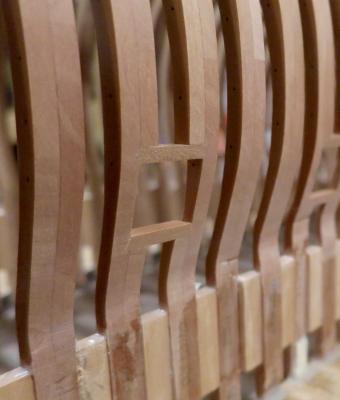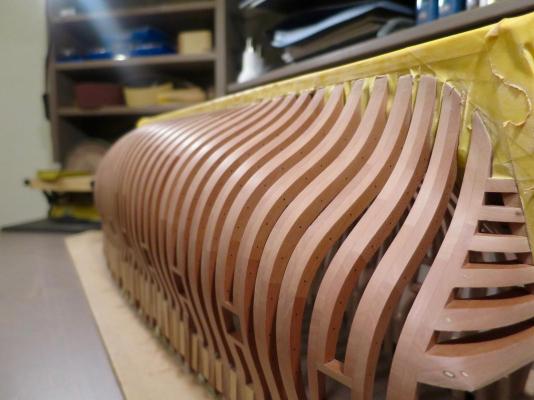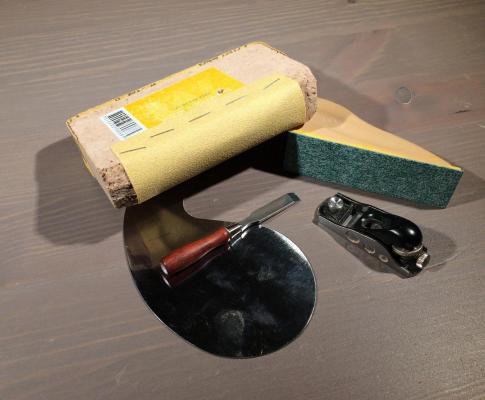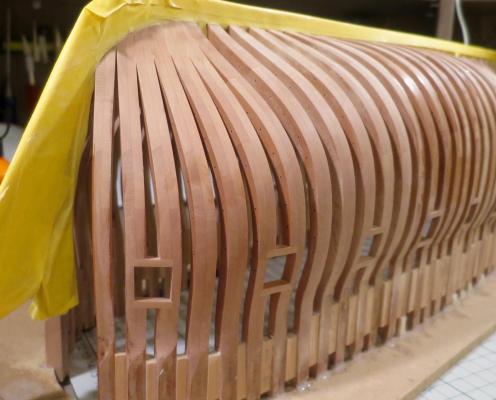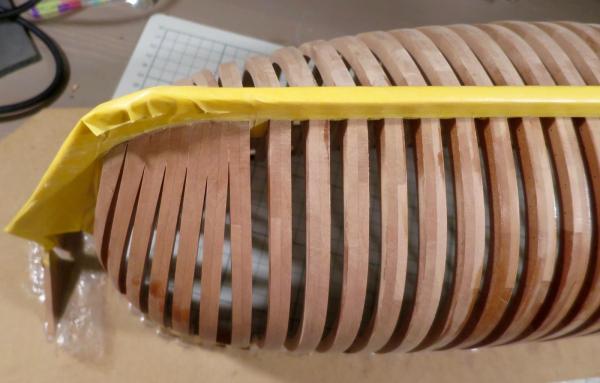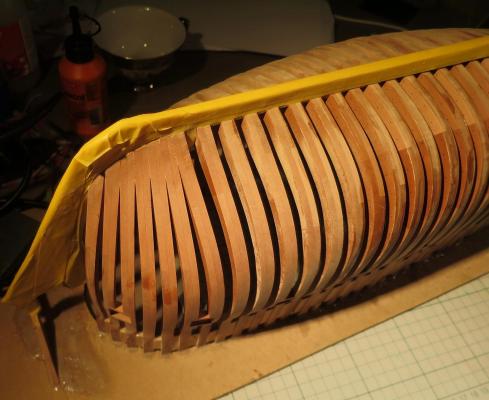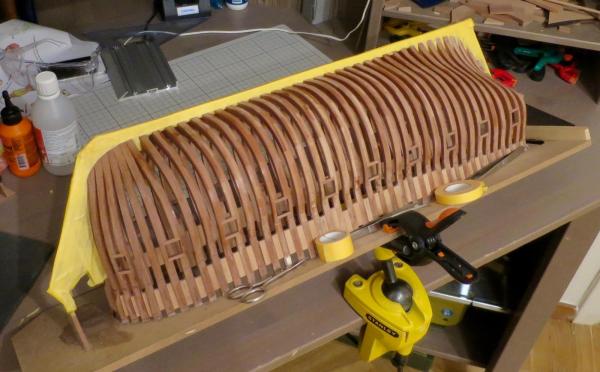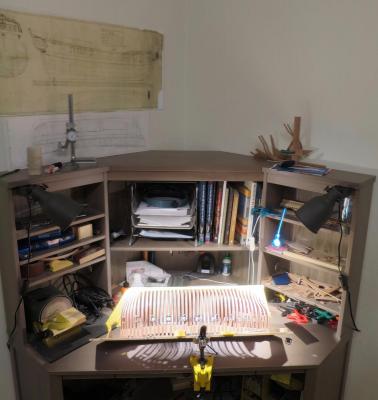-
Posts
1,557 -
Joined
-
Last visited
Content Type
Profiles
Forums
Gallery
Events
Everything posted by Mike Y
-
Thanks for the comments and likes! Greg, all the photos show the good side only. The ugly one is not shown yet - it has wood strips patching low spots, rough finish and a lot of shortcuts (simple gunport sills instead of angled, simplified transom framing, etc) The ugly side would be fully planked fom top to the bottom, so no need to bother with accuracy there. I will post a photo one day.. Just too ashamed to show it. Hi Robin, Do you mean the model I showed as a reference? Sorry, I do not have a pictures of its great cabin, the only one I have are from NMM website. Or I misunderstood the question?
- 969 replies
-
- hahn
- oliver cromwell
-
(and 1 more)
Tagged with:
-
Had the same with my model, and luckily the gaps closed completely as soon as humidity returned to the normal level and stayed there for a few days. But it was scary! Your model is truly a museum-quality, and museum quality requires museum humidity controlling equipment Consider it as a compliment from mother nature
- 889 replies
-
Had very little time for modelling, pretty high activity in the office (in a good way though). But finally finished the side counter timbers on the side that would be open (read as "the side where I am trying to make it nice"). This one should start with a very old Soviet anecdote: So I installed some very oversized blocks and sanded them down to a wing-like shape. There are few minor errors (the wing transom corner was smoothened too much, and there are few minor dents), but I think it is decent for some part that was done totally from scratch, not according to Hahn's plans. Flipped the hull for the first time. Looks like a ship, actually! Time to finish the "ugly" side, and make a cradle for working with jig upside down, to access the inside of the hull. P.S.: sorry for the very blurry thumbnails of the photos, not sure why the forum engine compresses them so much. Please look on the fullsize versions, they are not as blurry.
- 969 replies
-
- hahn
- oliver cromwell
-
(and 1 more)
Tagged with:
-
http://www.dlumberyard.com/sells the plans and a timbering set for it. However, I ended up buying another wood (from Arkowood), because the wood provided with the timbering set had a major colour variation and defects (if we talk about the wood for frames, other wood was fine), and had a very rough finish, and sanding it to smoother finish was a very tedious and dull work. If you have a thickness a sander / planer - that should not be a big deal though.
- 969 replies
-
- hahn
- oliver cromwell
-
(and 1 more)
Tagged with:
-
Thanks! But actually, it would be fully visible. I will leave one side fully unplanked, which means that half of the counter timbers would be exposed (also with some skeleton of the quarter gallery). Like this:
- 969 replies
-
- hahn
- oliver cromwell
-
(and 1 more)
Tagged with:
-
Side counter timbers are fun! Starting with an oversized piece, made of two pieces each: After cutting and sanding: Installed, with a really oversized wing-like timbers: Now need to cut them to shape right on the hull, fair and add some nice spacers
- 969 replies
-
- hahn
- oliver cromwell
-
(and 1 more)
Tagged with:
-
Installed "hawse timbers". There were three options 1) Install a filler piece. Meh! 2) Build hawse timbers as they should be, as TFFM describes it. Opened the chapter about it, realised I also need bollard timbers. And I was supposed to do that without any drawings and patterns, because Hahn omits that detail as non-important Also, it will look weird - tightly spaced timbers at the bow, and evenly spaced simplified framing at the rest of the hull. So - next time, next model So I decided to go with option #3 - install one more frame that will look like a cant frame, and will follow the style of other frames. Since there are no drawings for that, started with template. Used that mushy extra-soft basswood that is supplied with Longboat kit - it is better than cardboard for that purpose, and shapes easily with any tools. Ended up with this beefy template: After lots of fitting and fine tuning, resulting hawse timber / extra cant frame ended up installed: Now making a side counter timbers. They would be built in TFFM way, because I do not like the way Hahn suggests to make it - with counter timbers installed 90 degrees to the ground, instead of following the curve of the hull. Huh, really? Going to do it this way (thanks Toni for a very clear photo in her Atlanta build log!)
- 969 replies
-
- hahn
- oliver cromwell
-
(and 1 more)
Tagged with:
-
ancre Le François 1683 by jose_b - Scale 1:48
Mike Y replied to jose_b's topic in - Build logs for subjects built 1501 - 1750
I can only guess how long it took to fine tune the keelson! Looks great! -
Oh wow, now it is clear how huge the model is! Have you weighted it? Also, what is your feedback on that LED lights in the display case? I was always worried that a cold white light will make model look more flat and pale than it really is. But your photos show a nice deep rich color. What are those LEDs? Would appreciate some information!
-
Incredible! Looking forward for the high quality photos of a finished model, and of course for the exciting build log of the next one
-
Proxxon TG125 Bench Disk Sander
Mike Y replied to pompey2's topic in Modeling tools and Workshop Equipment
The best place to buy it in Europe is amazon.de, never saw it cheaper. It is a good sander, very quiet. But mine was with slightly curved table, I replaced it with a wooden one. However, Proxxon support is good, they will ship you another table if that problem will happen for you! -
Nope, the port side (that would be fully planked) is not shaped or faired at all. I specifically made that last photo to show the comparison The port side transom is currently ugly as hell!
- 969 replies
-
- hahn
- oliver cromwell
-
(and 1 more)
Tagged with:
-
Finished the most risky part of the fairing - the outer surface of the side that would be opened. Lesson for the future - if you add the bolt simulation - add another millimiter of margin to the frame lines, especially on the sides of the hull (it is unlikely that the bottom would be problematic). Ended up with some really thin sides around the midship: But overall - nothing is screwed up! Just some bolts that are too close to the edge of the frame, but they are not poking to the side! No finish applied, and will sand with fine grits right before finishing - apparently, finger marks are very visible. The transom wings required a lot of shaping! You can compare with the non-faired side on the right. I tried lots of different tools for fairing, but ended up with this set: Cork block shaped to be round on one side, and remains flat on another. Sandpaper - Mirka 120 grit. Semi-flexible yellow thingy was very useful when sanding the bow and transom. Right the exact flex! Grit 90. French curve scraper helped to level the frames, especially in the tight areas. In another areas, miniature chisel was used for that. Surprisingly, block plane was very useful to quickly even out the frames, to later finish it with the sanding block.
- 969 replies
-
- hahn
- oliver cromwell
-
(and 1 more)
Tagged with:
-
HMS Naiad 1797 by albert - FINISHED - 1/48
Mike Y replied to albert's topic in - Build logs for subjects built 1751 - 1800
Albert, what is the finish that you are using? It looks like no finish at all? -
Ended up with changing the lamps every time I need to make a photo Bright lamps for modelling, softer ones for photos. Gaetan, thanks for the advice, but it is a living room, so aesthetics matter. I moved from a lamp on the arm to two stationary mounted lamps because they are nicer.. Started the fairing. Some fairies are definitely involved! It is a real miracle, what it does with the hull! You can probably spot the difference between faired bow and other parts of the hull. (Please enlarge the photos to see it better) And a "romantic" version with powerful lamps This is a very first version, the highest grit was only 240. Apparently, accidental finger marks are very visible on the faired frames. Hope to finish the entire hull in a few weeks... Will see how it shines after the high grits
- 969 replies
-
- hahn
- oliver cromwell
-
(and 1 more)
Tagged with:
-
The "romantic" style of photos is due to the new light setup - two warm spotlights 400lm each installed on both sides of the table: I will probably just use a weaker lamps (200lm opal shade lamp) to take the photos. The hull is covered in layers of the masking tape and is ready for fairing. Getting really used to working on angle, using the vice as a stand to fix the model. Allows for an easy access inside the hull (yes, it is a problem when building upside down), and also easier to work with the sides of the hull. Dreaming about a lifting table!
- 969 replies
-
- hahn
- oliver cromwell
-
(and 1 more)
Tagged with:
-
Thanks Erik!No new issues, and I unglued one side of every 3th/4th spacer synmetrically on both sides of the hull, so it reduced the hull stress due to shrinkage, and the gaps are now evenly distributed. Should have done that frome the day one Next is the hull fairing with a very small margins for that. Should have added a bigger margin when cutting the frames!
- 969 replies
-
- hahn
- oliver cromwell
-
(and 1 more)
Tagged with:
About us
Modelshipworld - Advancing Ship Modeling through Research
SSL Secured
Your security is important for us so this Website is SSL-Secured
NRG Mailing Address
Nautical Research Guild
237 South Lincoln Street
Westmont IL, 60559-1917
Model Ship World ® and the MSW logo are Registered Trademarks, and belong to the Nautical Research Guild (United States Patent and Trademark Office: No. 6,929,264 & No. 6,929,274, registered Dec. 20, 2022)
Helpful Links
About the NRG
If you enjoy building ship models that are historically accurate as well as beautiful, then The Nautical Research Guild (NRG) is just right for you.
The Guild is a non-profit educational organization whose mission is to “Advance Ship Modeling Through Research”. We provide support to our members in their efforts to raise the quality of their model ships.
The Nautical Research Guild has published our world-renowned quarterly magazine, The Nautical Research Journal, since 1955. The pages of the Journal are full of articles by accomplished ship modelers who show you how they create those exquisite details on their models, and by maritime historians who show you the correct details to build. The Journal is available in both print and digital editions. Go to the NRG web site (www.thenrg.org) to download a complimentary digital copy of the Journal. The NRG also publishes plan sets, books and compilations of back issues of the Journal and the former Ships in Scale and Model Ship Builder magazines.



